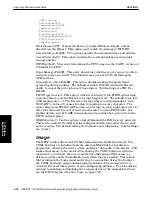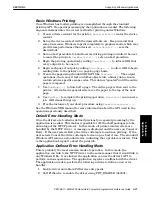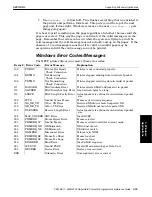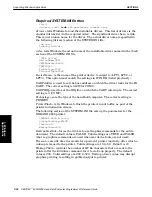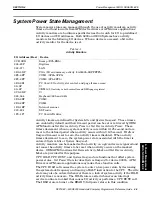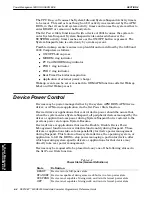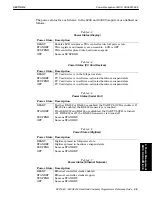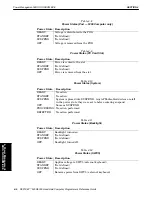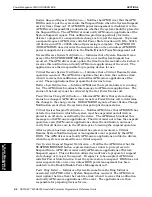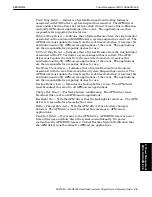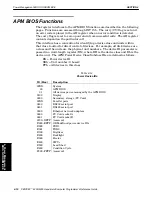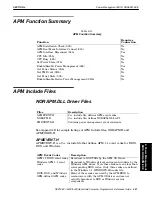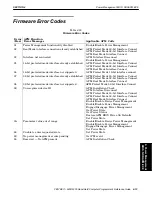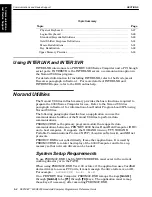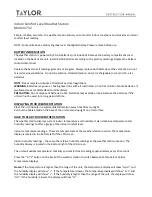
SECTION 4
Power Management BIOS: NORAPM.EXE
4-2 PEN*KEY
R
6200/6300 Hand-Held Computer Programmer’s Reference Guide
NORAPM.EXE is the APM BIOS. The APM system consists of one or more
layers of software. The APM BIOS resides at the lowest layer.
To provide portability at the higher layers of the APM system, NORAPM.EXE,
an installable DOS device driver, provides a software interface to the hardware
that is independent of the hardware interfaces.
However, to provide diagnostics with proprietary applications, functions specific
to Intermec Technologies Corporation, are also provided. These functions may
not be independent of the hardware interfaces.
The layer immediately above the APM BIOS includes the operating system
power management driver. For DOSĆbased systems, the device driver is
NPOWER.EXE. For Windows applications, the device driver is NORAPM.DLL.
The operating system driver is responsible for the power management strategy.
This includes system power state and device power state transitions. The driver
is also responsible for the application interfaces.
The highest layer includes applications that are
APMĆaware
. Applications
receive power messages only from the APM driver. Applications can
communicate with either the APM driver or the APM BIOS.
The objective of APM is to control the power usage of the system according to
system activity. As system activity decreases, APM reduces the power
consumption of system resources until the system is brought into a suspend
state.
There are two methods of powerĆlevel control:
"
The APM BIOS manages CPU/core logic, display, and backlight power in
the background, based on device activity.
"
An APM driver participates in managing power levels via function calls to
the APM software interface.
For more information relating to these drivers, see Section 2 for DOS Power
Management and Section 3 for Windows Power Management.
System Power States
NORAPM has three default system power states:
"
Ready ( full on )
"
Idle
"
APM suspend.
The primary difference between states is the latency needed for the system to
reach full operation. Power consumption and performance are greatest in the
Ready state and decrease with each succeeding state.
"
System Ready is the default mode when the system is not engaged in power
management.
"
System Idle is the first level of power management. The CPU is halted and
the system clock speed is reduced. Transitions from Idle to Ready are
instant.
"
System Suspend is the second level of power management. The CPU clock
is stopped and devices are placed into the power state defined by the
application for System Suspend. The device power state for suspend can be
any power state defined for that device. The exact definition of a device
power state during suspend is performed by using the
Set Power State, Get
Power State,
and
Enable/Disable Device Power Management
functions.
Transitions from suspend to ready generally take 100 milliseconds.
4. Power Management
BIOS: NORAPM.EXE

